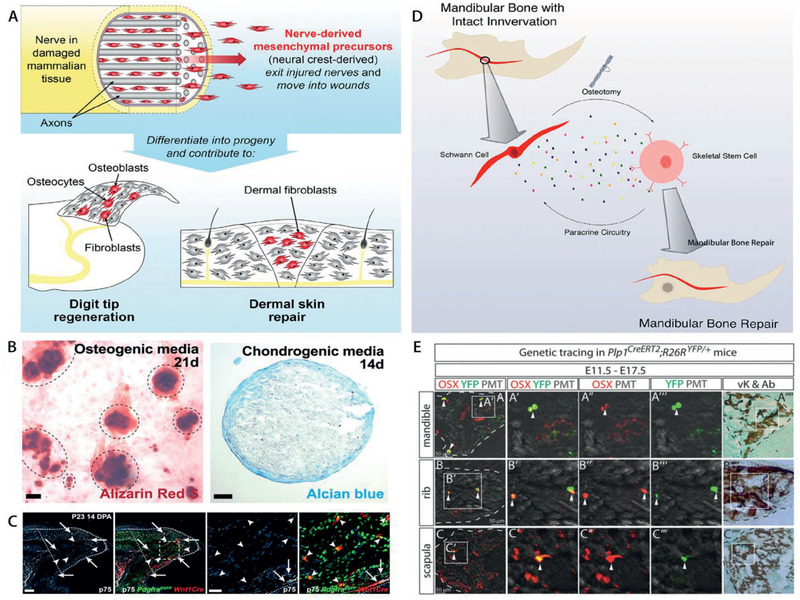Figure 2.

Participation of cells from nerves in embryonic bone development and bone regeneration. A) Nerve‐resident mesenchymal cells contribute to bone regeneration. B) Pdgfra‐positive mesenchymal cells can adopt features of bone and cartilage lineage cells when differentiated in vitro. C) Many TdT‐positive, Pdgfra‐EGFP‐positive, p75‐negative nerve‐derived mesenchymal cells are found located within and immediately adjacent to the regenerating bone. D) Mouse skeletal stem cells rely on paracrine factors secreted by Schwann cells as the underlying mechanism for mandibular bone regeneration. E) Schwann cell precursors generate osteoprogenitor cells and osteocytes in facial region and trunk during murine embryonic development. Schwann cell precursors progeny in Plp1CreERT2; R26RYFP/+ embryos traced from E11.5 to E17.5 were positive for osteoprogenitor marker OSX in the ossified parts of mandible, rib, and scapula. (A–C) Reproduced with permission.[ 134 ] Copyright 2018, Elsevier. (D) Reproduced under the terms of a Creative Commons Attribution license (CC‐BY‐4.0).[ 136 ] Copyright 2019, The Authors. Published by Elsevier. (E) Reproduced with permission.[ 135 ] Copyright 2019, The Authors. Published by National Academy of Sciences.
